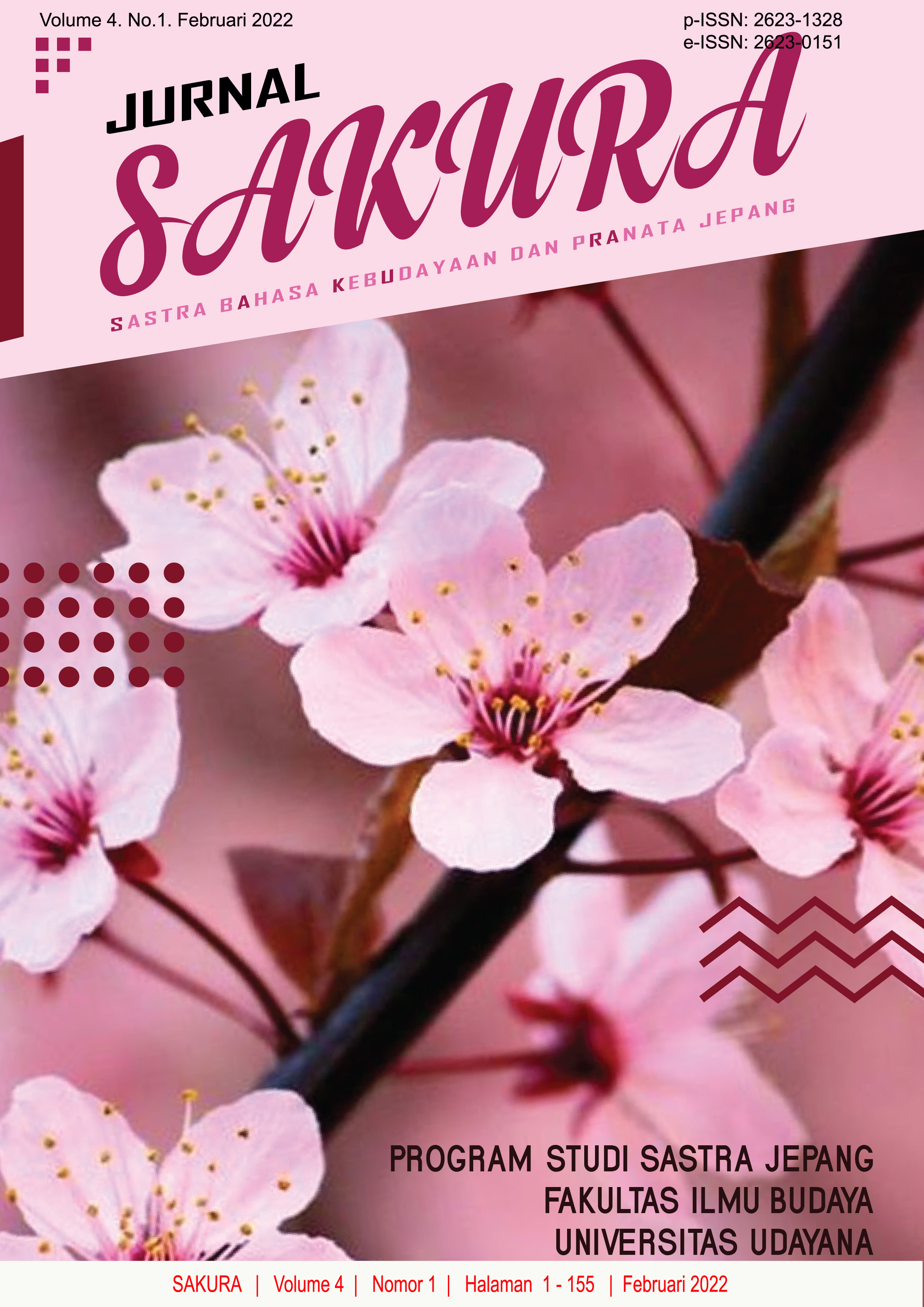Daya Perlokusi pada Implikatur Percakapan dalam Anime Tsuki Ga Kirei
Abstract
The goals of this research are to find and describe the kinds of conversational implicature and the power of perlocutionary effect on conversational implicature in Anime Tsuki Ga Kirei. The theories that are used come from Yule about classification of implicature and perlocutionary act from Austin. The method that used is descriptive qualitative method. The result shows that particularized conversational implicature were found to be more than generalized conversational implicature. Because, the additional knowledge possessed by each character was not equal. Meanwhile, scalar implicature and conventional implicature were not found. The perlocutionary effect on generalized implicature is in line with the implications of utterance. Then, perlocutionary effect in particularized conversational implicature are 11 data know the special knowledges and in line with the implications of utterance, 3 data know the special knowledges but not in line with the implications, and 1 data did not know the special knowledges and not in line with the implications.
Downloads
References
Austin, J.L. 1962. How To Do Things With Words. New York: Oxford University Press.
Chaer, A dan Agustina, L. 2004. Sosiolinguistik, Perkenalan Awal. Jakarta: PT Rineka Cipta.
Davies, R dan Osamu, I. 2002. The Japanese Mind. Boston: Tuttle Publishing.
Giri, N.L.K.Y. 2016. “Respon Keluhan Tidak Langsung Dalam Bahasa Jepang”. Dalam Seminar Nasional Bahasa Ibu (SNBI) IX (hlm. 1774-1783). Denpasar, Indonesia, Program Magister dan Doktor Linguistik Pascasarjana Universitas Udayana.
Grice, H.P. 1975. Logic and Conversation. London: University College London.
Leech, G. 1983. Principles of Pragmatics. England: Longman Group Limited.
Levinson, C. Stephen. 1997. Pragmatics. Great Britanian: Cambridge University Press.
Liliweri, A. 2011. Komunikasi Serba Ada Serba Makna. Jakarta: Kencana.
Nababan, P.W.J. 1987. Ilmu Pragmatik (Teori dan Terapannya). Jakarta: Departemen Pendidikan dan Kebudayaan.
Nafisah, F. 2019. “Tindak Tutur Perlokusi Dalam Anime Shigatsu Wa Kimi No Uso (四月は君の嘘) Karya Naoshii Arakawa Dengan Menggunakan Pendekatan Searle”. Skripsi. Surabaya: Program Studi Bahasa dan Sastra Jepang Universitas Negeri Surabaya.
Natalia, N. K. 2018. “Implikatur Percakapan Pada Tuturan Yang Melanggar Prinsip Kerja Sama Dalam Novel Kimi No Na Wa Karya Makoto Shinkai”. Skripsi. Denpasar: Program Studi Sastra Jepang Fakultas Ilmu Budaya Universitas Udayana.
Pradhana, N. I. (2016). “Penerapan Prinsip Kerja Sama Dalam Drama Detective Conan Spesial 1”. Pustaka, Jurnal Ilmu-Ilmu Budaya. Volume XVL, Nomor 2, hlm. 207-217.
Sudaryanto. 2015. Metode dan Aneka Teknik Analisis Bahasa. Yogyakarta: Duta Wacana University.
Sugiono. 2009. Metode Penelitian Kuantitif, Kualitatif dan R&D. Bandung: Alfabeta.
Yule, G. 1996. Pragmatics. New York: Oxford University Press.













